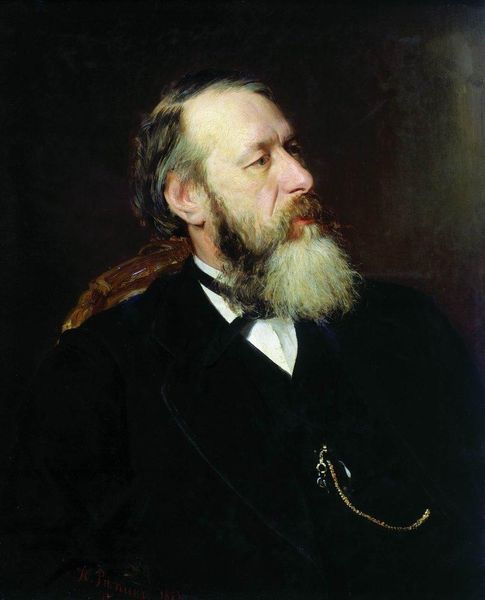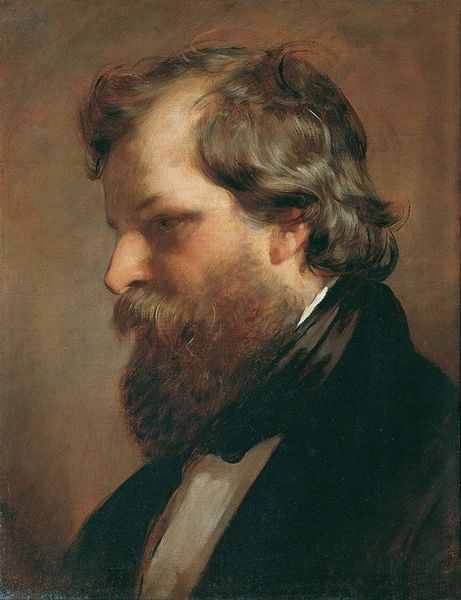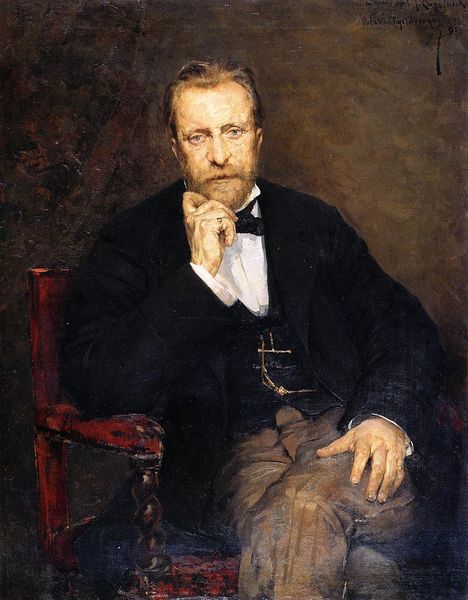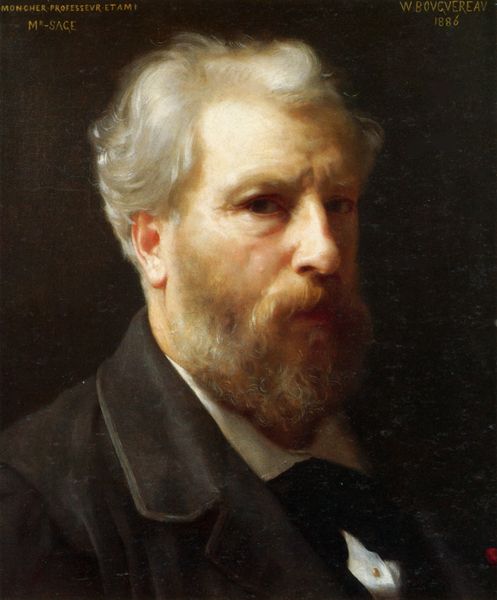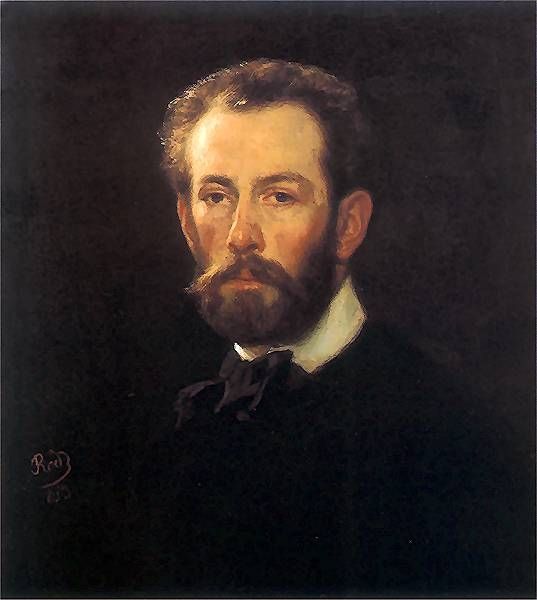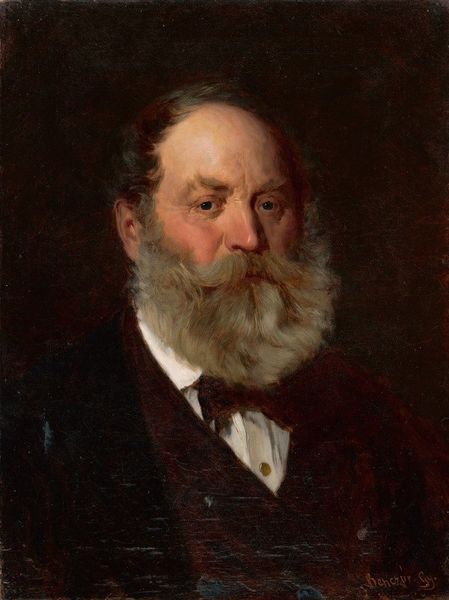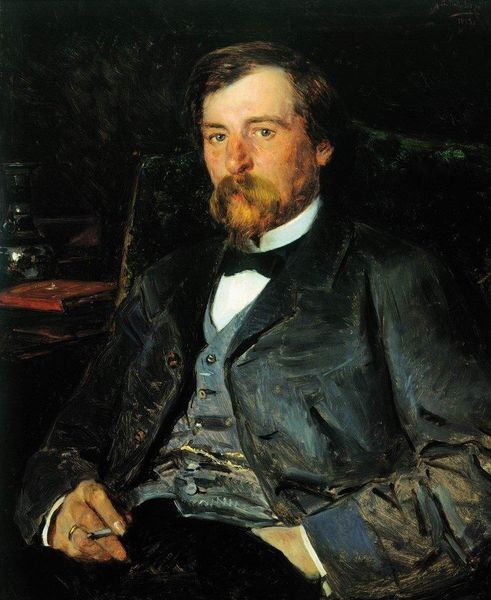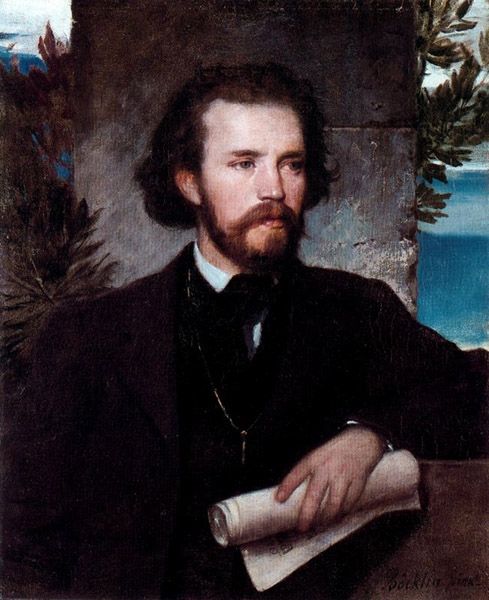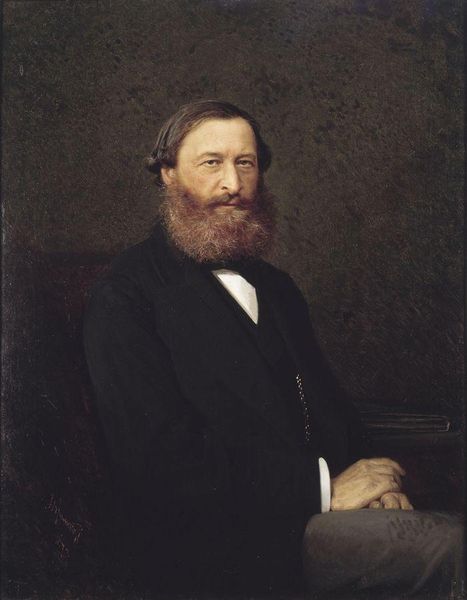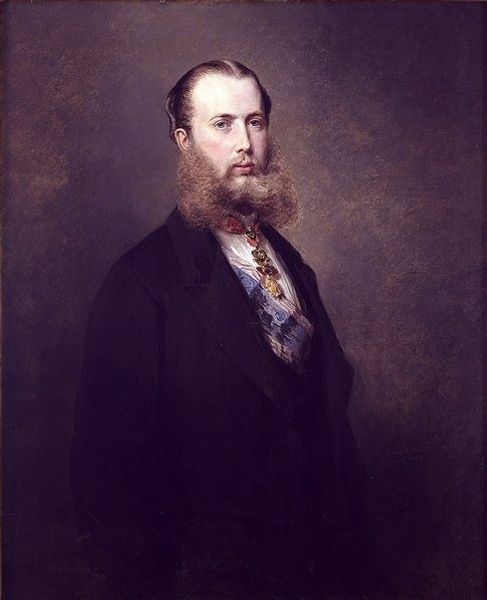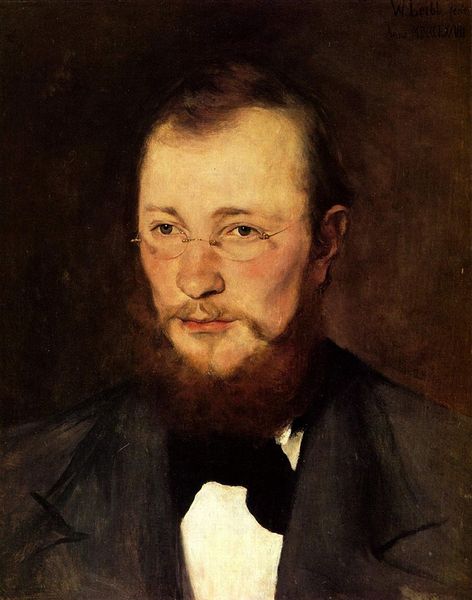
Copyright: Public domain
Editor: Here we have Fyodor Bronnikov's "Portrait of the Artist K.D. Flavitsky," created in 1873 using oil paint. The somber colors and somewhat melancholic gaze give the portrait a very serious mood. What's your interpretation of this work? Curator: Well, let's consider the context. Bronnikov painted this during a time of significant social and artistic change in Russia. Think about the rise of realism and the questioning of established norms. Do you see that reflected in the direct gaze and the relatively unadorned depiction of Flavitsky? Editor: I see what you mean. It's not idealized; it feels very…real. Curator: Exactly. Bronnikov, like many artists of his time, was interested in representing the world around him authentically, but through art, a sort of philosophical realism. How might Flavitsky’s identity as an artist influence the way Bronnikov portrays him, or even how Flavitsky chose to present himself? Editor: Perhaps there's an element of self-awareness there. Flavitsky, also being an artist, might have been conscious of the message the portrait conveyed. Curator: Precisely. The artwork, then, becomes a collaboration and an assertion of identity, challenging the traditional expectations of portraiture and raising broader questions about the role of the artist in society. Do you feel the work’s social consciousness? Editor: Absolutely. Seeing it in that context makes it so much more than just a portrait; it's a statement. I now notice how Bronnikov challenges our gaze, too, implicating us as viewers within the social context of that time. Curator: Indeed, art is a powerful form of communication, don't you think? It seems so many things are going on in it!
Comments
No comments
Be the first to comment and join the conversation on the ultimate creative platform.
